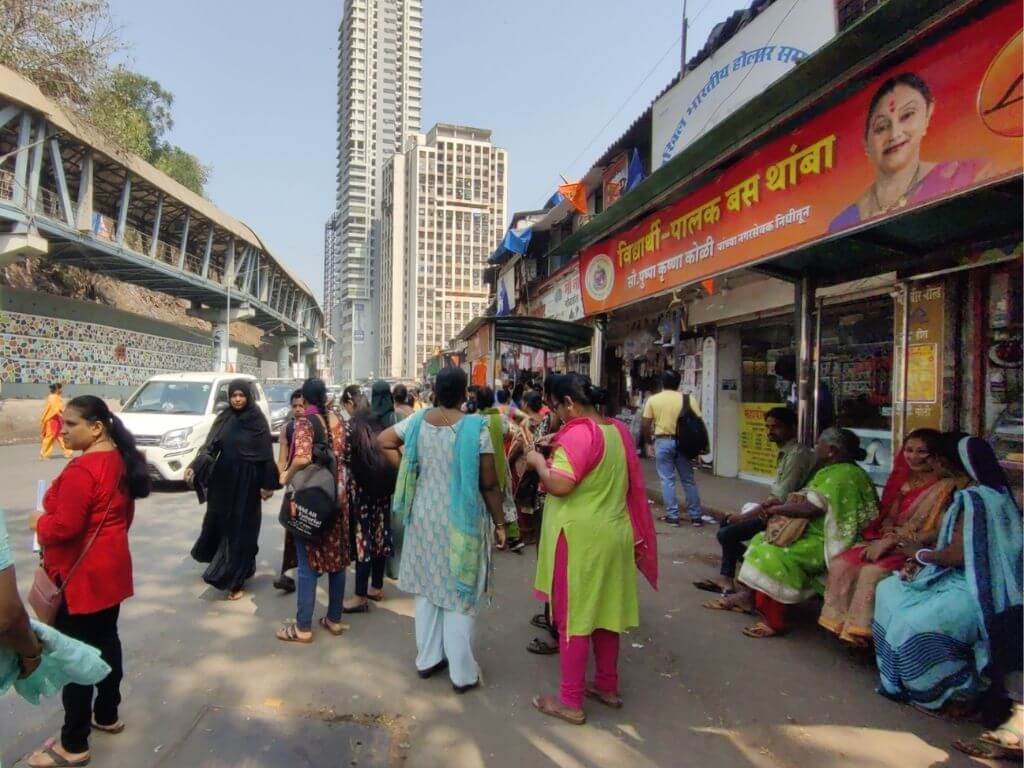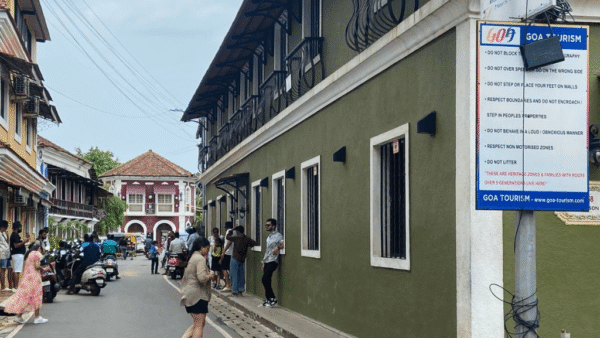Literature and documentation show that cities are primarily designed for able-bodied men. When women’s lives and needs are ignored in city making, it has meant unsafe spaces, non-inclusive transport systems, ignoring care work, even inadequate toilets. Helming Safetipin, a Delhi-based organisation working to make cities safer for women and other marginalised groups, Dr Kalpana Viswanath and her team worked on a report weighing in on these issues. The report, ‘She RISES: A framework for caring cities’ released last year offers a comprehensive framework to make cities gender-responsive. Viswanath talks to Question of Cities about the framework against the backdrop of gender issues in cities and related issues.
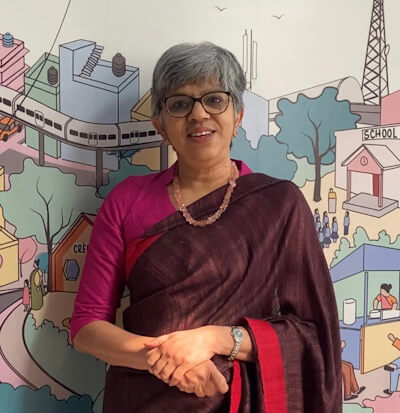
Photo: Safetipin
What issues do women primarily face in India’s cities?
There are many issues but they fall into two broad categories. One is about safety, violence and fear. Like, if I go out, I may not be safe or I should not take this job because I will come back late and the neighbourhood isn’t safe. Fear is a big driving force in how we women think of our right to the city, it limits our movements and access to opportunities. The second is the inequitable burden of care on women which also impacts our access to cities. This burden falls upon women in families but public spaces and services are designed only for able-bodied men. Women and a lot of people get left behind in our cities.
Tell us about the ‘SheRISES’ report and its potential for change.
We evolved the framework to systemically examine how to change our cities to make them gender-responsive. ‘RISES’ stands for Responsive, Inclusive, Safe, Equitable. The report gives a holistic systemic approach to gender-responsive cities including physical infrastructure, mobility, services and response to gender-based violence. Five streams have been identified where data is needed because you can’t bring about change unless you have the data to understand the situation. For example, what do we know about schemes available for women in transport, or housing for single women, or hostels for young women new to the city.
Under the five streams, we identified 16 elements that need to be addressed like lighting, public toilets, safety in transport, women in the mobility sector, creches, housing, helplines, gender mainstreaming and more. Cities are not going to address all of them but unless there is a holistic picture, we get one-off responses like lighting here or free bus rides there. These one-off interventions make governments feel they have done their bit but they are not enough; we need a gender-transformation perspective.
The report created the knowledge framework as the base on which an assessment framework was built with indicators like how many public toilets, mechanism to hear women’s voices when planning policies, the provision of creches, and so on. Safetipin has done a pilot in six cities in partnership with the Smart Cities Mission and Ministry of Housing and Urban Affairs. Based on the data collected, we developed a scorecard to show areas with gender-responsive provisions and areas where improvements can happen. The report allows cities to measure their own level of gender-responsiveness and provides a roadmap of how to reach it.
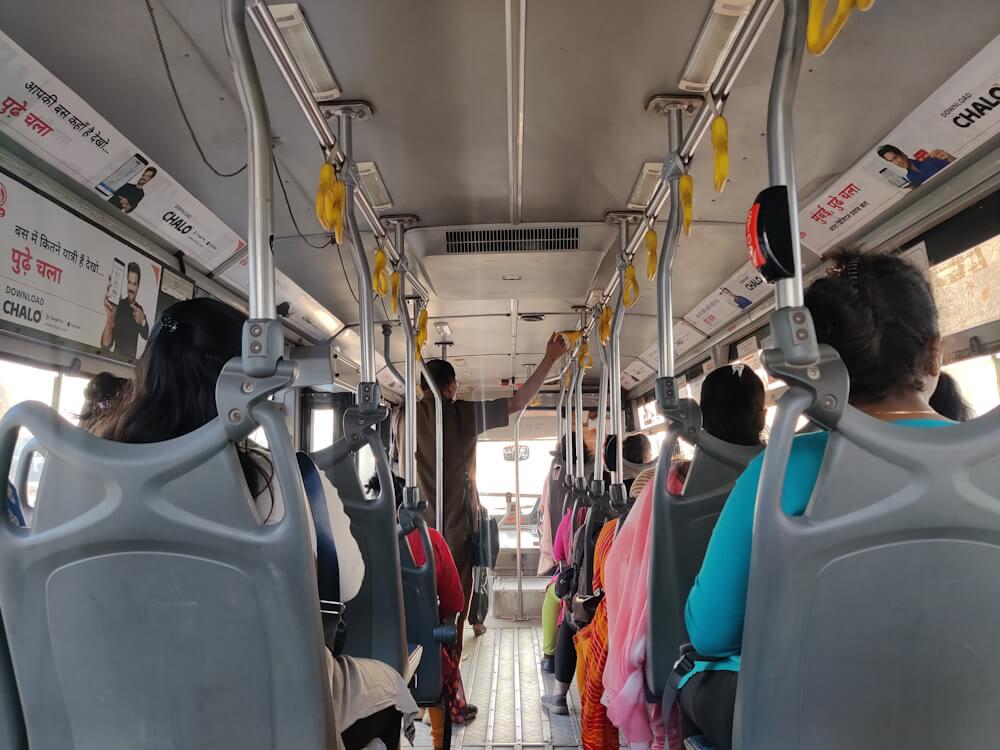
Photo: Jashvitha Dhagey
How important is the intersection of health, physical and mental, and cities?
I use the term well-being which encapsulates many elements. I am glad you brought up mental health dimension. Cities are where many of us are born, grow up, go to school, use public transport, make friends, escape from our families and find spaces to do things, fall in love, experience sadness but the city just becomes ‘You go from place A to B’. Of course, we have to go to places but that’s not all of city life. Unless it addresses well-being, the city becomes just a place of anxiety, stress, and trying to achieve something.
Public transport is about how do you get from A to B safely. There’s this instrumental view of the street, as a place to move cars. I remember this scene from Taare Zameen Par where the young boy gets lost in the city which was portrayed as an unsafe place. Young people nowadays are not allowed to enjoy the city. I am not saying there’s no danger, if we only look at the city as a place of danger, how can we enjoy it? The city is everything – enjoyment, danger, happiness, sadness, friendship, love.
When you have a fight or a break-up, you may want a quiet place to sit for a while. A city should provide that space for all people. As women, the fear of danger and violence makes these spaces unavailable. What is the experience for a young woman who has moved from a small town to a big city? How do we nuance that and make it one of well-being? How do we build a sense of, “I am a part of this city, how do I participate in this city? These elements have to be brought into the discourse; not just better lighting and public transport. They are important but we need a holistic endeavour.
How can creating a sustainable care economy in cities lead to better cities for women?
In many ways, SheRises report is foregrounding the care work and the mobility of care. How do you build public transport that fulfills the needs of a working woman with a small child? The idea of trip chaining is one where women make multiple small trips through the day as they drop children to school, look after elderly relatives, buy groceries while going to and coming from work. More trips also mean women pay more for transport than men who go in the morning and return in the evening. There is research now that shows the ‘pink tax’.
Our cities have a lot of older people too. How are we building a caring city that gives them a space to socialise, sit somewhere? A care economy perspective takes all this into account. For example, parks where children can play safely are also places for caregivers – men, women, grandparents, domestic workers – to sit and talk. We have to factor in the idea that we are all at some point of our life going to give or receive care. Also, today privilege is a 9-to-5 job which is the reality of a small population. The Covid-19 pandemic ‘visibilised’ the invisible care work, so instead of going back to business as usual we can start privileging it in how we build our cities. I remember, during the pandemic, everyone said ‘build back better’ but I think we should ‘build forward better’.
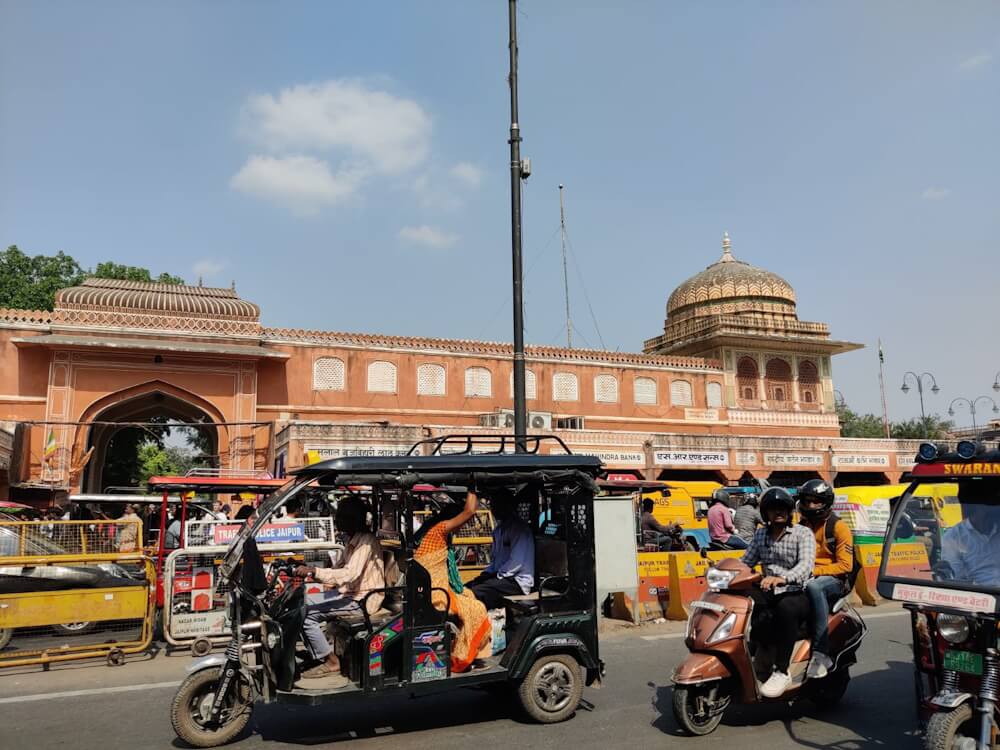
Photo: Jashvitha Dhagey
What kind of structural improvements are needed in cities in response to gender-based violence?
There’s one wide set of interventions needed – a helpline, one-stop crisis centres, robust police and legal systems that are more sympathetic to women’s issues. The one-stop crisis centres are important because it is difficult for a woman to go to a police station. We also need to provide options. If she doesn’t want to file a criminal case, what are the civil remedies and social remedies?
The second is about participation. How do women, as citizens, participate in a caring society? It could be a specific intervention. If you are at a bus stop and see a young woman sexually harassed, can you raise your voice or does the system make us turn a blind eye? Or it could be policy interventions. Basically, I think, the sense of community responsibility is missing. For example, why aren’t Resident Welfare Associations places that women can go to when they face problems?
One of the challenges women face is housing, it’s the reason they stay in abusive relationships. Where is the temporary accommodation, how is child care supported? It’s not just the criminal justice system but the social system too which has to respond. And this has to be structurally built into cities. We also need an ‘ethics of care’ determining how we design services. Why do men’s toilets not have baby-changing stations, what is a father supposed to do? Therefore, the ‘ethics of care’ is important along with the ‘economy of care’ in planning and building cities.
So much of your work at Safetipin is on transport. How will more women in the transport system change cities?
Globally, there are less than 25 percent women working in the transport sector. In India, it’s around 12-13 percent. Having more women here means more women in the public domain. Many changes need to happen. One of the things we found in Delhi in our research in 2005-6 was that there were no women’s toilets in bus depots. How was a woman supposed to work in the transport sector if a basic toilet was not provided? These kinds of changes are now taking place.
Secondly, our safety audits showed that just the presence of more women in the public domain makes the city safer and more welcoming to everyone. We tend to feel safer in places where women and children are walking around.
Then, there’s designing of routes, kind of amenities provided and so on. For example, in a train or metro or bus, the design is such that the grab handles are usually too high for most women because they have been designed for men. So, we need a change in not just urban design but in many little ways, a deeper change. Transport becomes one of the crucial spaces to bring about change.
We need safety to move around. Whether in an auto, shared rickshaws, bus, metro, train or cab, transport has to be safe for things to change. Uber says it is trying to recruit women but unless the safety improves, we won’t have more of them. In many countries, bus drivers are women. Apart from giving women work, it also helps children to see different kinds of role models. To me, transport is central to the ‘de-masculinisation’ of cities.
SheRISES found that women spend more time and money than men while commuting. How can this be set right?
There are many ways. Some cities in India have started free bus rides for women. Some people have a problem with it but research tells us that it has improved women’s lives. Domestic workers who would walk 5 kilometres to save Rs 25-30 on buses now save 1 to 1.5 hours and have leisure time too. But this is not the only issue. I think transport design is equally important, especially in recognising good last-mile connectivity; we need affordable and safe options that can get us home after dark once we get off a metro or bus. More women bus drivers and conductors, some free transport, a few reserved seats, better last-mile connectivity, better waiting facilities with lighting – all are needed. This needs a holistic perspective. The free bus rides cannot be the only model that cities begin to adopt or can be feasible in the long run.
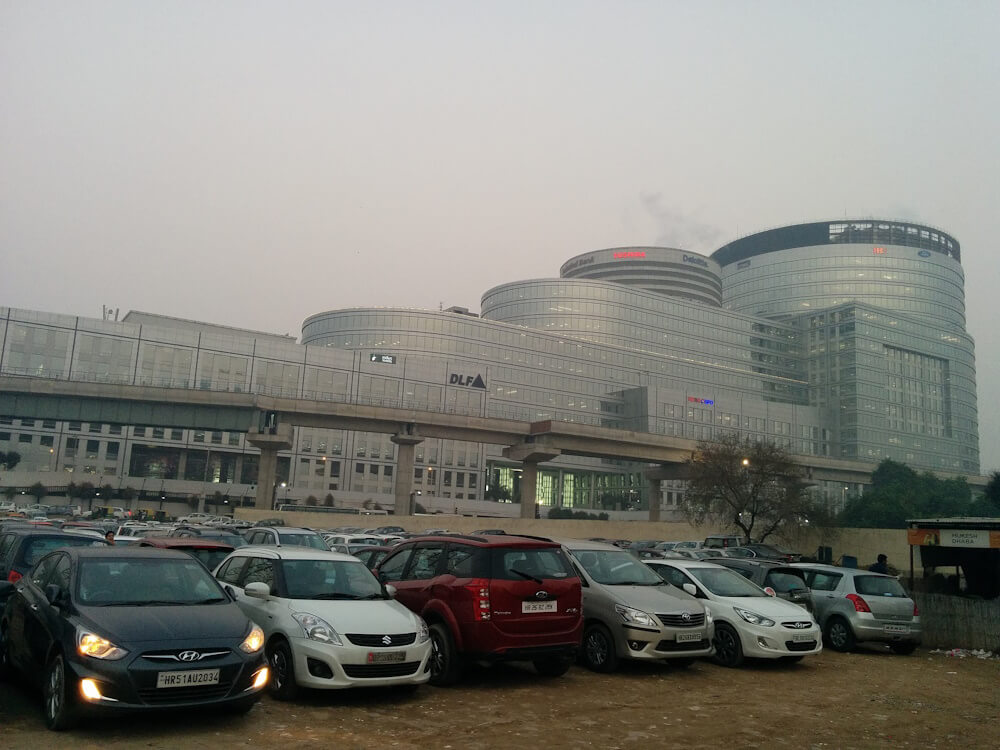
Photo: Wikimedia Commons
The report has recommendations for women’s safety in transport. What are some of them?
We have come up with a set of parameters and indicators as the basis on which cities can start planning interventions. They then have to build the Standard Operating Protocols (SOP) for each area. For example, in helplines, the SOP would include what makes a good helpline, how to respond, so on. SheRISES is not prescribing the SOP in every area but giving governments and planners the elements they need to start thinking about, elements on which cities need to design SOPs. Some of these are at the national level, some at the state level. Tier 2 and 3 cities do not need the same SOP as Mumbai or Delhi because the scale is different.
It is important that an SOP is introduced in all areas of function in a city because, in its absence, one police station does things one way and one shelter does it one way but another does it another way. We did not reinvent, it is all there is some of the best practices internationally or even in India. The idea was to come up with the best way to design and service a city which will satisfy the needs of diverse women. The SOP does not presume that there’s only one kind of woman. Young and old women, women from offices and slums, have different needs and move around differently. Cities have to build for the diversity of experiences; we cannot build for a particular privileged woman alone.
What are your thoughts on having more ‘eyes on the street’? Does it improve the ways in which women move?
As we did safety audits, we found that ‘eyes on the street’ (from Jane Jacobs) is a most important variable to women’s safety. I live in Gurugram, a city full of buildings and high walls, where nobody actually uses streets. ‘Eyes on the street’ means there’s eye-level activity on the street like a cafe, chai ki dukaan, shops, buildings with porous walls. Thirty years ago, our cities were designed this way; shops on the ground floor and houses above, Delhi’s DDA houses did not have high walls. These make the inside safer but the outside more unsafe which is the problem with the gated community model of urbanisation. The walls are to keep the property safe; security guards at the gate are not bothered if you are sexually harassed outside the gate.
Ideally, ‘eyes on the street’ should give us a city that we feel happy to walk around in. Parts of Mumbai are quite safe, it’s a lively city. Kolkata has a lot of activity on its streets. New York and Bangkok streets are full of activity with shops and cafes. This brings the street to a human scale. You interact, walk, do window shopping, buy an ice cream – engage with the city. Unfortunately, the cities we are building in India are moving away from this, so they are becoming unsafe. The older parts of cities like Mumbai, Delhi, Chennai, Lucknow, which were once vibrant, are being modernised. It’s happening globally too in Johannesburg, Latin American cities. But ‘eyes on the street’ is central to designing safe cities especially for women.
Jashvitha Dhagey is a multimedia journalist and researcher. A recipient of the Laadli Media Award 2023, she observes and chronicles the multiple interactions between people, between people and power, and society and media. She developed a deep interest in the way cities function, watching Mumbai at work. She holds a post-graduate diploma in Social Communications Media from Sophia Polytechnic.
Cover photo: Jashvitha Dhagey

